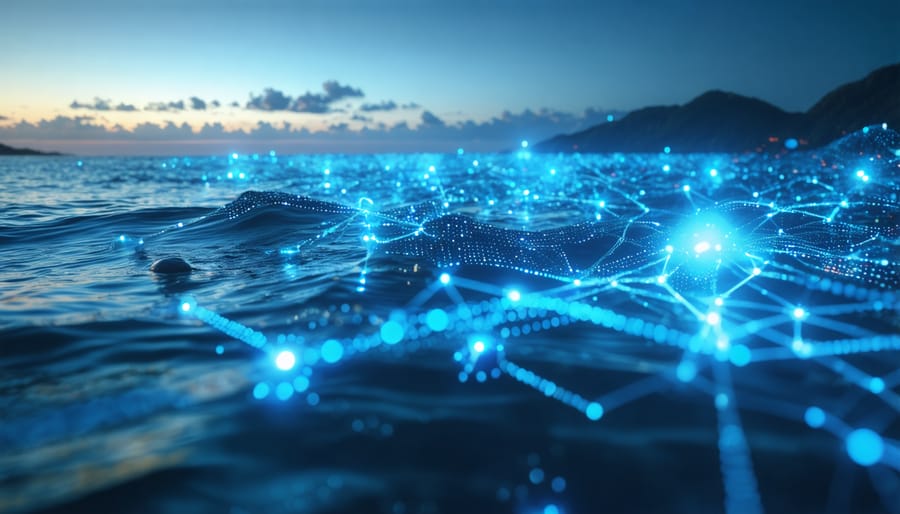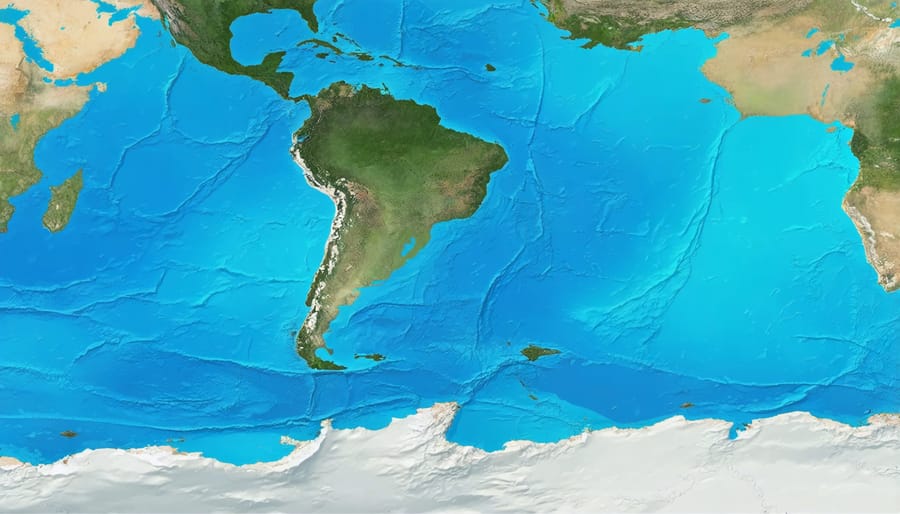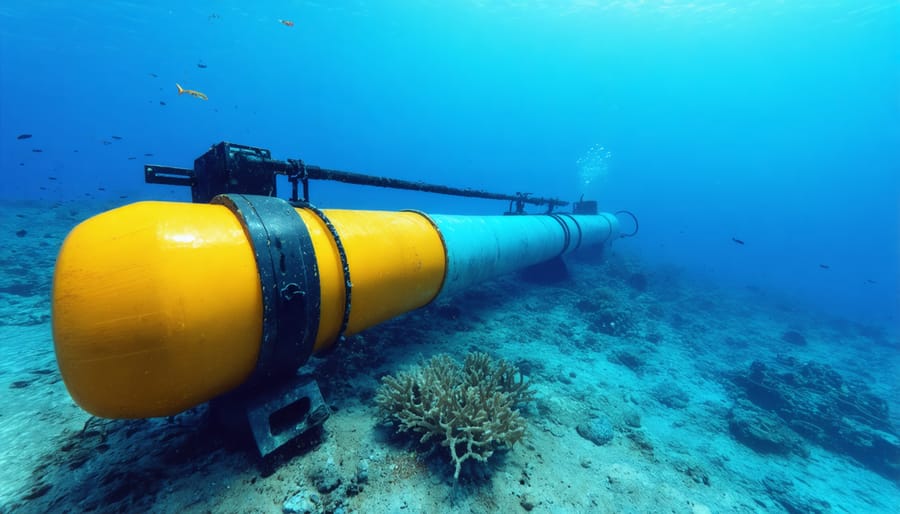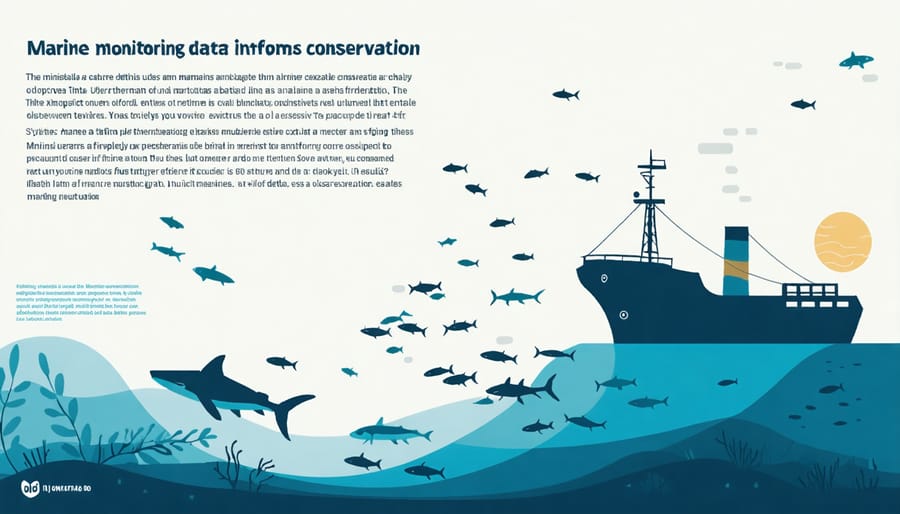
Dive into the critical world of marine monitoring systems – the eyes and ears safeguarding the precious biodiversity beneath the waves. As the threats facing marine environments grow more dire by the day, these sophisticated technologies are our frontline defense, providing real-time data and insights that empower scientists, policymakers, and communities to take swift, targeted action. From autonomous underwater vehicles to satellite-based remote sensing, marine monitoring systems are revolutionizing our understanding of ocean health and driving innovative solutions to protect the fragile web of life that sustains us all. In this article, we’ll explore the cutting-edge tools and techniques at the heart of marine conservation, and discover how each of us can play a role in supporting their vital mission.
Types of Marine Monitoring Systems
Satellite Remote Sensing
Satellite remote sensing plays a vital role in monitoring the world’s oceans. By observing ocean color, scientists can estimate the concentration of chlorophyll-a, an indicator of phytoplankton abundance and primary productivity. Sea surface temperature measurements help track global climate patterns, identify marine heatwaves, and monitor coral bleaching events. Satellites also measure sea level rise, a critical factor in understanding the impacts of climate change on coastal communities and ecosystems. Additionally, remote sensing data can detect and track oil spills, harmful algal blooms, and changes in ocean currents. By providing global coverage and long-term data sets, satellite observations complement in-situ measurements and models, enabling researchers to study marine ecosystems at unprecedented scales. As technology advances, the resolution and accuracy of satellite data continue to improve, enhancing our ability to monitor and protect the ocean’s precious resources.

Underwater Acoustic Monitoring
Underwater acoustic monitoring involves the use of hydrophones and other specialized sensors to listen to the soundscapes beneath the waves. These devices capture the vocalizations of marine mammals, the snapping of shrimp, and even the rumble of passing ships. By analyzing these recordings, scientists can track the movements and behaviors of various species, from whales to fish. Acoustic monitoring also helps researchers assess the impact of human-generated noise pollution on marine ecosystems. Hydrophone arrays can pinpoint the sources of disruptive sounds, such as seismic surveys or pile driving, allowing for better management of these activities. Additionally, long-term acoustic datasets provide valuable insights into how marine life responds to changing environmental conditions, including ocean acidification and rising temperatures. As technology advances, underwater acoustic monitoring will continue to play a crucial role in understanding and protecting the complex web of life in our oceans.

Autonomous Underwater Vehicles (AUVs)
Autonomous Underwater Vehicles (AUVs) are revolutionizing marine monitoring by providing scientists with unprecedented access to the ocean’s depths. These unmanned, self-propelled vehicles are equipped with an array of sophisticated sensors that collect valuable data on water quality, marine habitats, and species abundance. As they navigate through the water column, AUVs measure parameters such as temperature, salinity, pH, and dissolved oxygen, creating detailed profiles of the ocean’s physical and chemical characteristics. High-resolution cameras and sonar systems allow AUVs to capture images and map the seafloor, revealing the intricate structures of coral reefs, seagrass beds, and other critical habitats. By employing advanced computer vision and machine learning algorithms, AUVs can automatically identify and count different marine species, providing essential information on population dynamics and biodiversity. The data collected by AUVs is crucial for understanding the health of marine ecosystems, tracking changes over time, and informing conservation efforts. As these technologies continue to evolve, AUVs are becoming increasingly autonomous, able to make decisions and adapt their missions based on real-time data analysis. With their ability to explore vast areas of the ocean efficiently and cost-effectively, AUVs are vital tools in the fight to protect and preserve our planet’s marine life.
Applications of Marine Monitoring Data
Assessing Ecosystem Health
Marine monitoring systems provide scientists with valuable data to assess the health and well-being of our ocean ecosystems. By analyzing various parameters such as water quality, species abundance, and habitat conditions, researchers can identify trends and changes over time. This information helps to paint a comprehensive picture of the current state of marine environments and can highlight areas of concern that require immediate attention or intervention.
For example, monitoring data may reveal declining populations of key species, indicating potential imbalances in the ecosystem. It can also detect the presence of pollutants or other stressors that threaten marine life. By identifying these issues early on, scientists can develop targeted conservation strategies and work with policymakers to implement measures that protect vulnerable habitats and species.
Moreover, long-term monitoring allows for the detection of gradual changes that may not be immediately apparent, such as the impacts of climate change on ocean temperatures and acidity levels. This knowledge is crucial for predicting future trends and informing adaptation strategies to ensure the resilience of marine ecosystems in the face of global environmental challenges. Ultimately, the insights gained from monitoring data empower scientists and conservationists to make informed decisions and take action to safeguard the incredible biodiversity found beneath the waves.

Supporting Conservation Efforts
Marine monitoring systems play a crucial role in guiding conservation efforts by providing valuable data that informs the establishment and management of marine protected areas (MPAs). These systems help identify biodiversity hotspots, critical habitats, and areas facing significant threats, enabling conservationists to prioritize protection for the most vulnerable ecosystems. By tracking changes in species populations, water quality, and overall ecosystem health, monitoring data allows managers to assess the effectiveness of existing MPAs and adapt their strategies accordingly. Furthermore, the insights gained from monitoring systems guide the development of targeted conservation measures, such as fishing regulations, pollution control, and habitat restoration projects. By painting a comprehensive picture of the challenges facing marine ecosystems, these systems empower decision-makers to take evidence-based actions that promote the long-term sustainability of our oceans. As we continue to explore and understand the complexities of marine life, the role of monitoring systems in driving effective conservation will only become more vital, ensuring that future generations can enjoy the beauty and benefits of thriving ocean ecosystems.
Challenges and Future Directions
Data Integration and Analysis
As marine monitoring systems continue to advance, the volume and variety of data they generate is rapidly increasing. Synthesizing this wealth of information from multiple sources presents a significant challenge for researchers and conservationists. To effectively harness the power of this data, there is an urgent need for sophisticated tools capable of integrating and analyzing diverse datasets. By developing such tools, scientists can gain a more comprehensive understanding of marine ecosystems, identify trends and patterns, and make data-driven decisions to support conservation efforts. Collaboration between marine biologists, data scientists, and software developers is crucial in creating user-friendly platforms that streamline data management and analysis. With the right tools in place, the scientific community can leverage the full potential of marine monitoring systems to advance our knowledge of the ocean and inform strategies for protecting its biodiversity.
Expanding Coverage and Accessibility
Marine monitoring systems are increasingly being deployed in underrepresented regions across the globe, providing crucial data on marine ecosystems that have been historically understudied. These efforts aim to fill knowledge gaps and ensure that conservation strategies are informed by a more comprehensive understanding of the world’s oceans. Initiatives such as the Global Ocean Observing System (GOOS) and the Ocean Biodiversity Information System (OBIS) are working to standardize data collection and make information more accessible to researchers, policymakers, and the public.
In addition to expanding geographic coverage, there is a growing push to make marine monitoring data more widely available and user-friendly. Open-access databases, such as the Marine Biodiversity Observation Network (MBON) and the Ocean Biogeographic Information System (OBIS), allow users to explore and download data on marine species distributions, habitats, and environmental conditions. These platforms facilitate collaboration among scientists and enable citizen scientists to contribute to marine conservation efforts. By democratizing access to marine monitoring data, we can foster a more engaged and informed global community committed to protecting our oceans.
Engaging Citizen Scientists
Engaging citizen scientists in marine monitoring programs offers a powerful way to expand data collection efforts and raise awareness about ocean health. By participating in initiatives such as beach surveys, water quality testing, and marine life observations, members of the public can directly contribute to scientific research while deepening their understanding of marine ecosystems. These hands-on experiences foster a sense of stewardship and connection to the ocean, inspiring individuals to become advocates for marine conservation in their communities. Moreover, citizen science programs provide valuable educational opportunities, allowing participants to learn from experts and develop new skills. As more people become involved in monitoring activities, the collective impact grows, creating a network of informed and passionate ocean guardians. Through their dedication and enthusiasm, citizen scientists play a vital role in filling knowledge gaps, informing conservation strategies, and building a stronger foundation for the sustainable management of our marine resources.
Conclusion
Marine monitoring systems play a vital role in understanding, protecting, and preserving our ocean ecosystems. By providing real-time data and long-term insights, these technologies enable scientists, policymakers, and conservationists to make informed decisions and take effective action. From tracking climate change impacts to identifying at-risk species and habitats, marine monitoring systems are essential tools in the fight to maintain marine biodiversity.
However, to fully realize the potential of these systems, increased support and investment are crucial. Governments, organizations, and individuals must come together to fund research, development, and deployment of advanced monitoring technologies. This includes not only financial support but also the allocation of resources for training, data analysis, and collaboration among stakeholders.
Furthermore, engaging the public in marine conservation efforts is essential. Citizen science initiatives and volunteer opportunities allow individuals to contribute to data collection and monitoring, fostering a sense of stewardship for our oceans. By raising awareness about the importance of marine monitoring and the challenges facing our oceans, we can inspire collective action and drive positive change.
In conclusion, marine monitoring systems are indispensable for understanding and safeguarding the health of our oceans. With increased support, investment, and public engagement, we can harness the power of these technologies to protect marine biodiversity for generations to come. Let us work together to ensure a sustainable future for our oceans and the countless species that call them home.
jessica
Ava Singh is an environmental writer and marine sustainability advocate with a deep commitment to protecting the world's oceans and coastal communities. With a background in environmental policy and a passion for storytelling, Ava brings complex topics to life through clear, engaging content that educates and empowers readers. At the Marine Biodiversity & Sustainability Learning Center, Ava focuses on sharing impactful stories about community engagement, policy innovations, and conservation strategies. Her writing bridges the gap between science and the public, encouraging people to take part in preserving marine biodiversity. When she’s not writing, Ava collaborates with local initiatives to promote eco-conscious living and sustainable development, ensuring her work makes a difference both on the page and in the real world.
